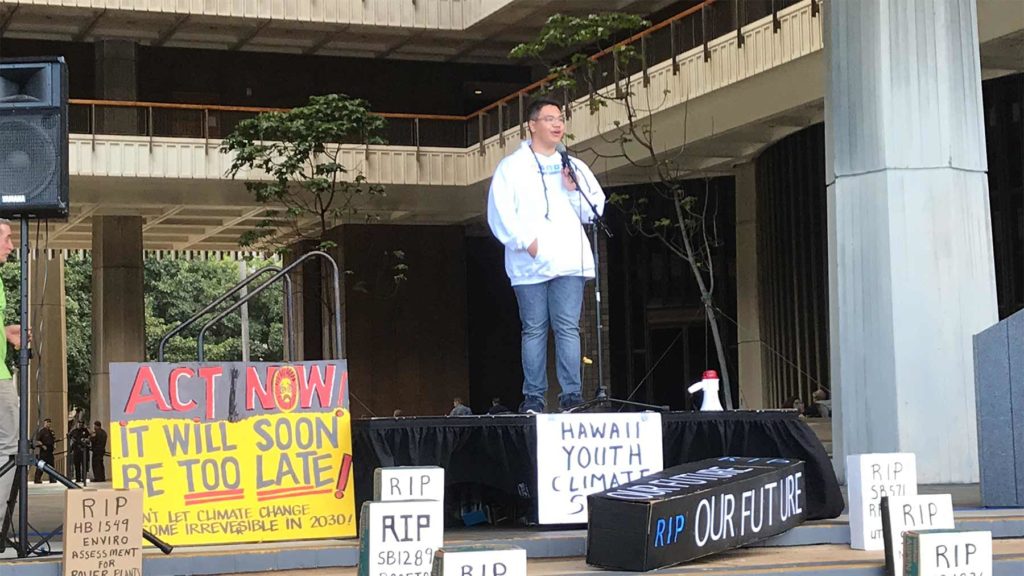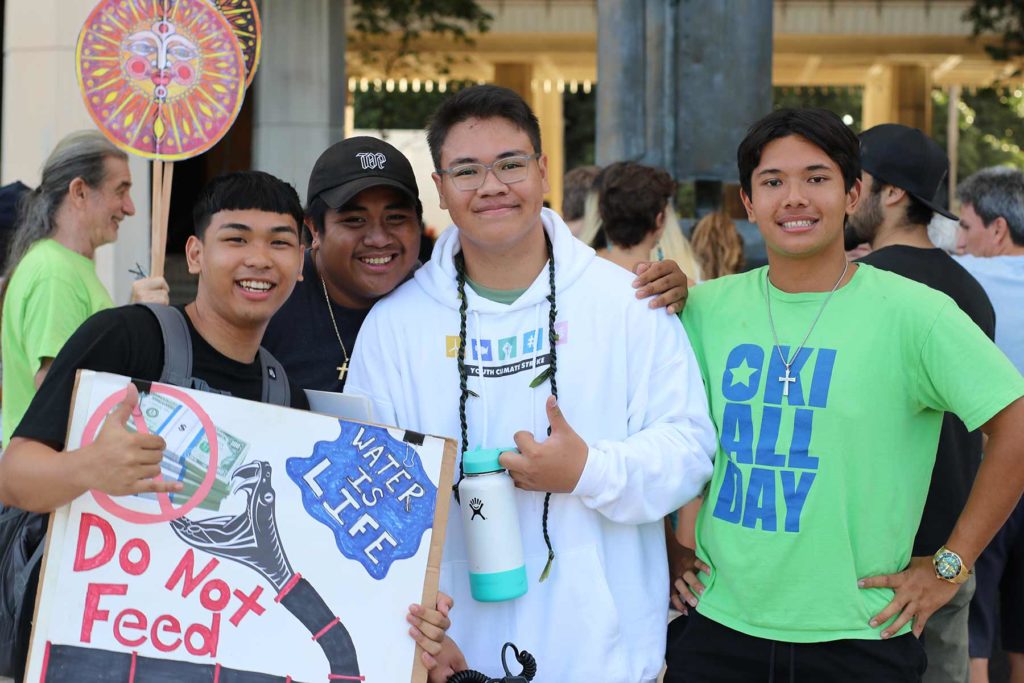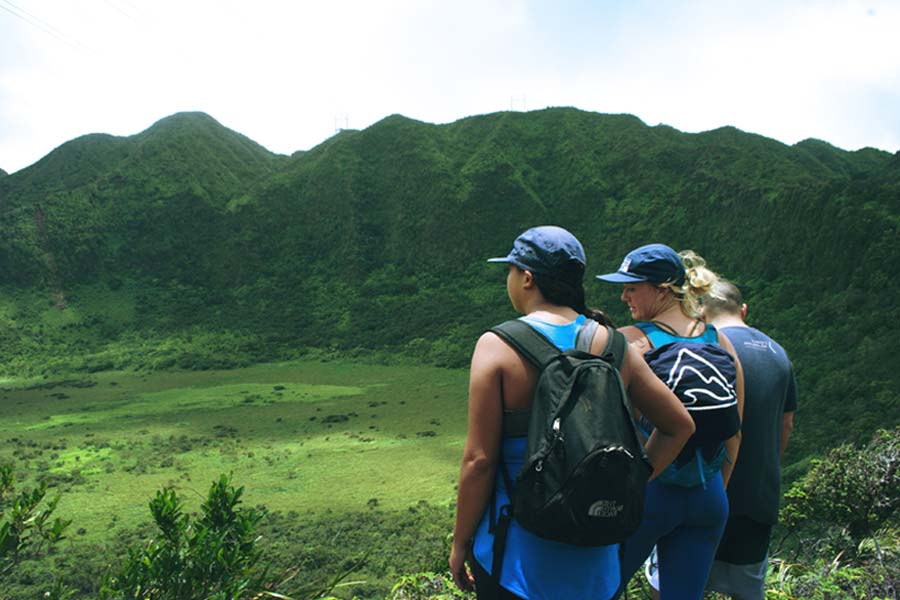On a sunny spring day at the Hawaii State Capitol, a crowd presses up to a stage. The setting is somber: Mock gravestones surround the platform, engraved with the numbers and titles of clean energy bills that died prematurely at the legislature. A fake coffin, painted with the words, “RIP our future,” adds a macabre touch. The crowd is restless, but the teenager who steps up to the podium grabs their attention. “We’re here because we want to support the youth,” he says. “We want politicians to move faster on climate change.” The crowd cheers. The young man on stage, Kawika Pegram, looks pleased. He is the local organizer for the National Youth Climate Strike, and he is just getting warmed up.


On March 15, 2019, children in a hundred different countries walked out of their classrooms to join a global call for action on climate change. A month earlier, this Waipahu High student knew he wanted to organize the Honolulu strike, and felt ready for the challenge of pulling of a major city-wide protest. Kawika was no stranger to politics. He had previously organized a movement to extend first amendment rights to student journalists. But climate change was different. It felt personal.
When national organizers for the U.S. Youth Climate Strike tweeted calls for local organizers, Kawika jumped at the opportunity. On short order, he reached out to the press, to community groups, and to student governments of area schools. The strike was a success by any measure, drawing national attention.
But for Kawika, this was just the beginning. “[Hawaii] has been amazing,” he says. “But the fact of the matter is that 100% renewable energy by 2045 is not fast enough.” Kawika's next goal? "Making this a movement.” He sees the need for change on a global scale. “Not a year later,” he says. “Not months from now. But now.”
But for Kawika, this was just the beginning. “[Hawaii] has been amazing,” he says. “But the fact of the matter is that 100% renewable energy by 2045 is not fast enough.” Kawika's next goal? "Making this a movement.” He sees the need for change on a global scale. “Not a year later,” he says. “Not months from now. But now.”
Tell us your story. We want to share it!
Have you already made a change in your life for the good of the planet? Are you ready to take your effort to the next level? Fill out the form below and inspire others to lead Hawaii’s transition to 100% clean energy.
Tell Us Your Story
Join Our Community
Want to stay updated on how our journey to 100% renewable energy is progressing? Fill out the form below to sign up for our mailing list.
Join Our We Are 100 Community
Mahalo!


